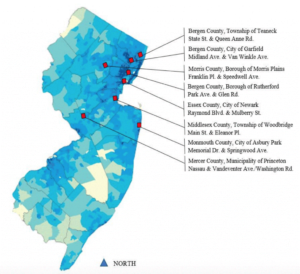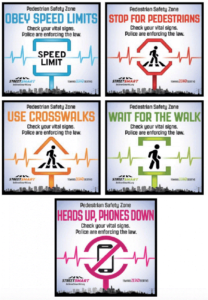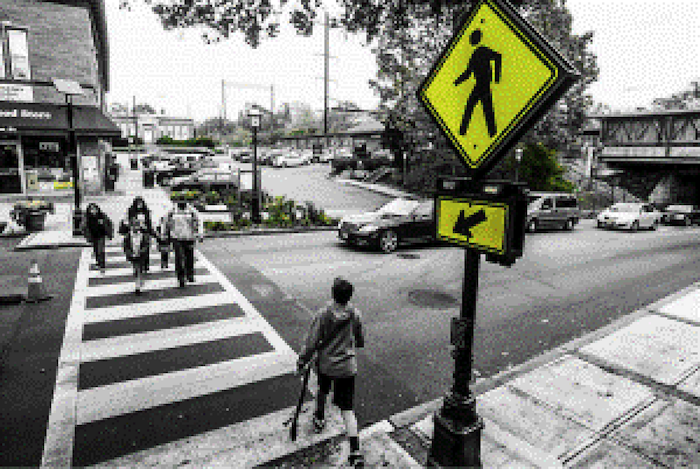A collaborative university research project shows that the North Jersey Transportation Planning Authority’s (NJTPA) ‘Street Smart NJ’ program is changing the behaviours that contribute to pedestrian-vehicle crashes.
Created in 2013 to address pedestrian safety in the state, the NJTPA’s Street Smart NJ initiative was studied by Rutgers University’s Centre for Advanced Infrastructure and Transportation (CAIT) and Rowan University, and analysed the campaign’s impact on pedestrian safety at intersections in eight communities in 2018 and 2019. The two-part observational and behavioural study compared rates of unsafe pedestrian and driver activity before and after Street Smart NJ campaigns were implemented. The observational study tested for change by noting behaviours at eight high-risk intersections. Researchers looked at the failure of vehicles to stop before a right turn at a red signal or stop sign; turning vehicles failing to stop for pedestrians; vehicles running a red light or stop sign; and pedestrians crossing unsafely (against the signal or outside the crosswalk).
The study team found improvements across the board after these communities implemented Street Smart NJ campaigns. The greatest change was a 60% reduction in vehicles failing to stop before turning right at a red signal or stop sign, followed by a 45% reduction in vehicles running red lights or stop signs. Results also included a 40% reduction in vehicles failing to stop for people crossing and a 21% reduction in pedestrians crossing unsafely. The study also found that after separating the data by intersection type and traffic control, non-compliant pedestrian and driver behaviours also improved. Overall, all intersection configurations (5-leg, 4-leg, and 3-leg) were associated with favourable outcomes following the campaigns.
For the behavioural study, surveys were distributed before and after campaigns in the eight communities. The surveys were promoted throughout the areas on municipal websites and via social media, and in person at target intersections. In total, 2,241 people completed the survey, with respondents asked to report on their own actions and observed behaviours of others. Following Street Smart campaigns, the results show improvements in pedestrian and driver non-compliant behaviours, including: pedestrians crossing mid-block without a crosswalk, pedestrians crossing while using a cell phone, drivers speeding near high volumes of pedestrians, and drivers running red lights or stop signs. Most communities also saw statistically significant improvements in awareness of campaign messaging, including ‘Wait for the Walk’ and others. Since its inception, Street Smart NJ has grown from five pilot locations to more than 100 municipalities across the state.
 “The NJTPA asked us to examine the behavioural change of pedestrians and motorists through observational data at various high-risk intersections,” said Dr Mohammad Jalayer, a professor at Rowan University and lead author of the study. “These types of measurements are important, as they allow agencies to better use their resources when deciding what programs to continue and how to continue them. Overall, the observation results demonstrate the positive impact of the campaign on changing pedestrian and driver behaviours.”
“The NJTPA asked us to examine the behavioural change of pedestrians and motorists through observational data at various high-risk intersections,” said Dr Mohammad Jalayer, a professor at Rowan University and lead author of the study. “These types of measurements are important, as they allow agencies to better use their resources when deciding what programs to continue and how to continue them. Overall, the observation results demonstrate the positive impact of the campaign on changing pedestrian and driver behaviours.”
Angel Estrada, chair of the NJTPA board, commented, “These results illustrate that Street Smart NJ is helping make our roads safer for everyone. By combining education and enforcement we can make a difference and help New Jersey work toward its goal of zero fatalities.” 





